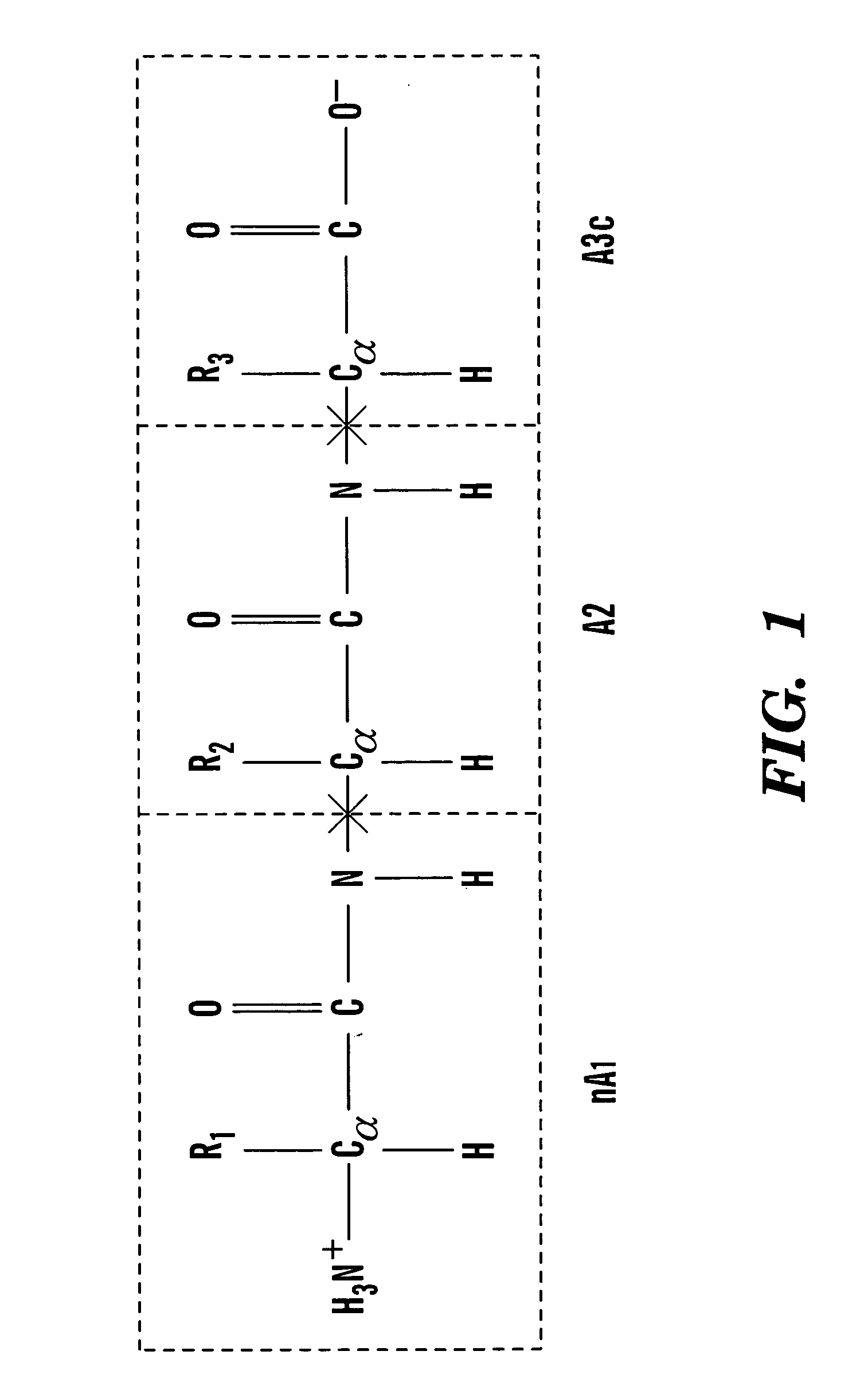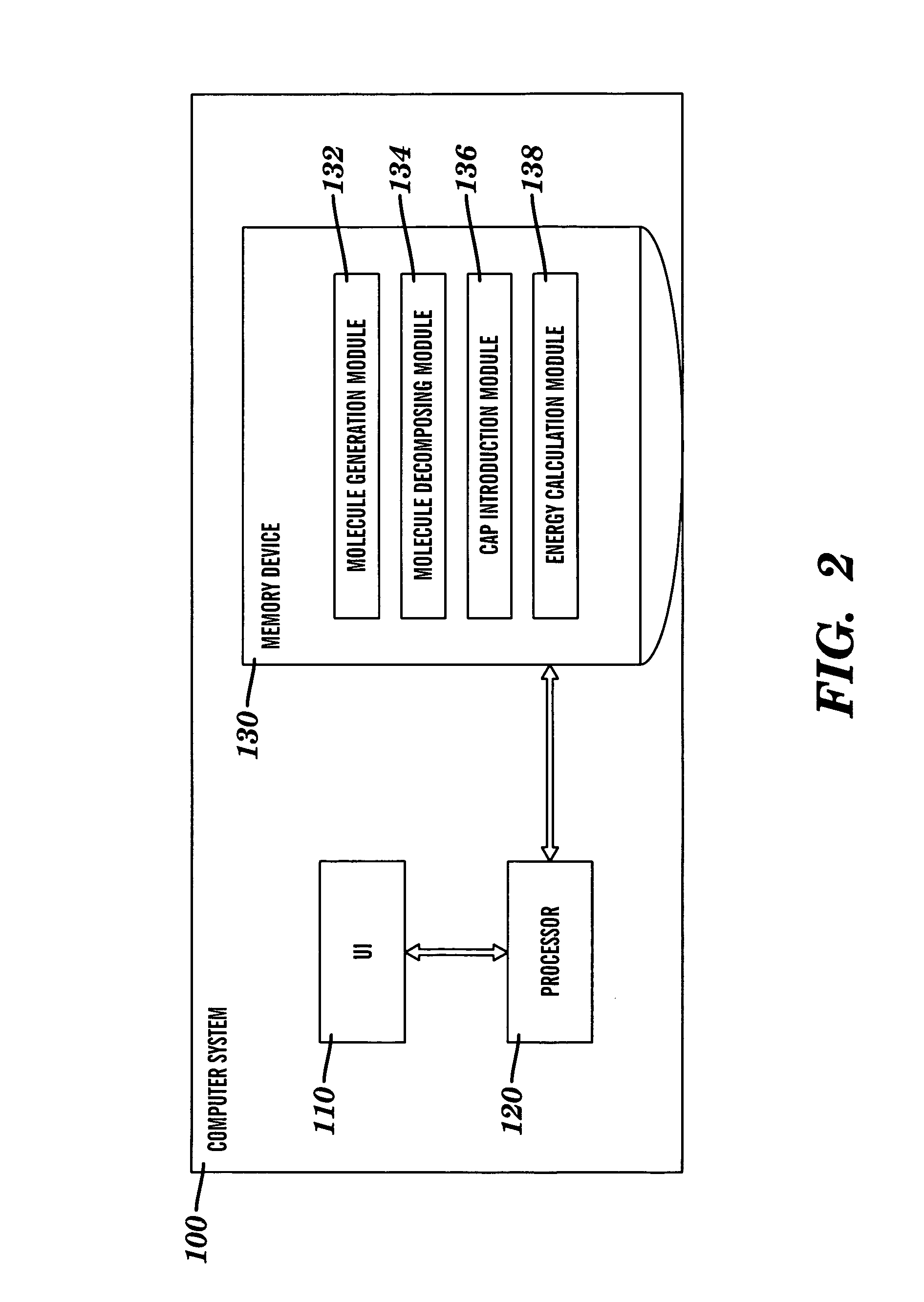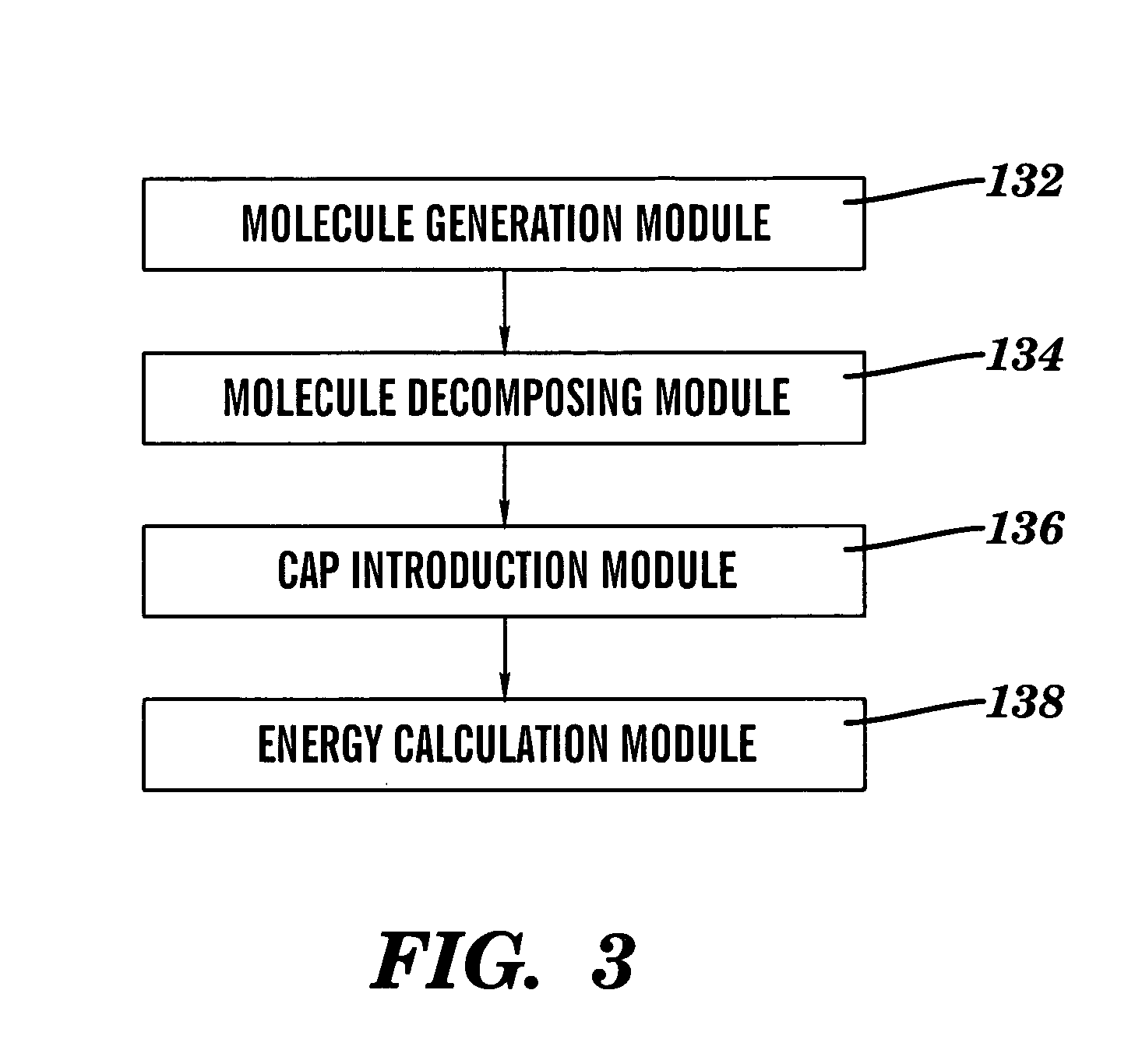Method for introducing conjugated caps onto molecular fragments and systems and methods for using the same to determine inter-molecular interaction energies
a technology of conjugated caps and molecular fragments, which is applied in the field of conjugated caps introducing onto molecule fragments, can solve the problems of high computational cost, inability to fully quantum mechanical or ab initio calculate the energy of intermolecular interaction, and still have significant limitations
- Summary
- Abstract
- Description
- Claims
- Application Information
AI Technical Summary
Benefits of technology
Problems solved by technology
Method used
Image
Examples
examples
[0067]The following examples make reference to the figures and results produced in those figures. The following examples and numerical tests are intended to illustrate, not limit, the invention.
[0068]The above approach has been tested on a number of peptides interacting with a water molecule and the results of calculations are compared to the full system (FS) ab initio calculation. Three different peptides were chosen, as shown in FIGS. 4A-C. The first peptide is composed of three glycine (Gly-Gly-Gly) with charged terminals as shown in FIG. 4A. This peptide has a stretched structure whose energy was not optimized. The second peptide is composed of two amino acids but both ends are capped with the methyl group, i.e., Me-His-Ser-Me as shown in FIG. 4B. The structure of this peptide has been optimized using AMBER force field. The third example is a five-base peptide Gly-Ser-Ala-Asp-Val (SEQ ID NO. 1) whose structure has also been optimized using the force field. The interaction energi...
PUM
| Property | Measurement | Unit |
|---|---|---|
| intermolecular interaction energy | aaaaa | aaaaa |
| interaction energy | aaaaa | aaaaa |
| total interaction energy | aaaaa | aaaaa |
Abstract
Description
Claims
Application Information
 Login to View More
Login to View More - R&D
- Intellectual Property
- Life Sciences
- Materials
- Tech Scout
- Unparalleled Data Quality
- Higher Quality Content
- 60% Fewer Hallucinations
Browse by: Latest US Patents, China's latest patents, Technical Efficacy Thesaurus, Application Domain, Technology Topic, Popular Technical Reports.
© 2025 PatSnap. All rights reserved.Legal|Privacy policy|Modern Slavery Act Transparency Statement|Sitemap|About US| Contact US: help@patsnap.com



